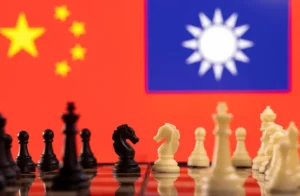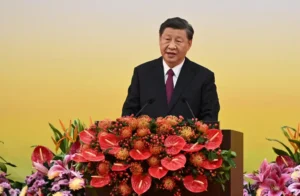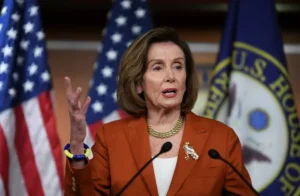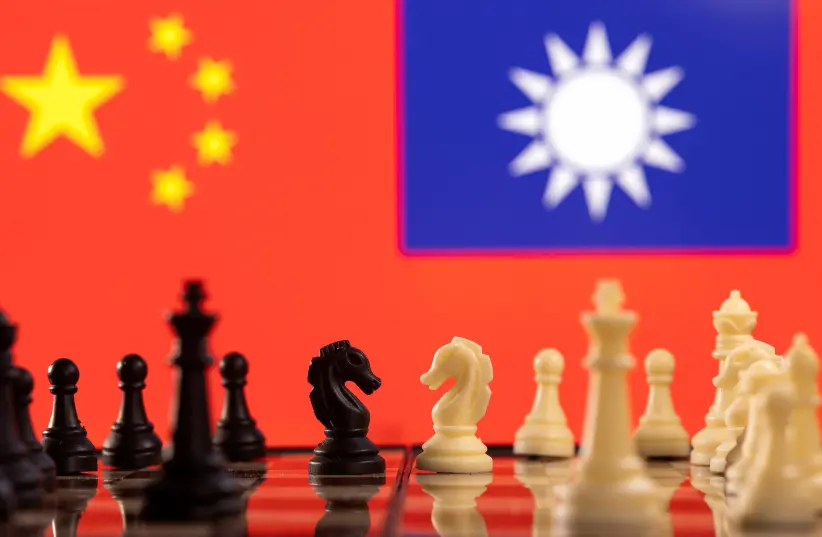Nancy Pelosi’s planned visit to Taiwan has drawn the ire of China, which warns the consequences of her visit will be harsh. But why is Taiwan seen as such a sensitive topic?

US House Speaker Nancy Pelosi announced Monday that her trip to Asia will indeed include a stop in Taiwan, drawing the ire of Chinese officials. Her visit to Taiwan will make her the highest-ranking US official to visit the country since then-Speaker of the House Newt Gingrich went in 1997.
Chinese President Xi Jinping reportedly warned US President Joe Biden that “Those who play with fire will perish by it” in regards to Pelosi’s visit. Chinese foreign ministry spokesman Zhao Lijian said Monday that it would be “a gross interference in China’s internal affairs” if Pelosi visits Taiwan, and warned that it would lead to “very serious developments and consequences.”
US officials maintain that there is nothing fundamentally wrong or out of the ordinary with an unofficial visit by a US government official, with Secretary of State Blinken saying “the decision is entirely the Speaker’s” and adding that “Congress is an independent, coequal branch of government.”
With the eyes of the world now firmly on Taiwan, it is important to understand why this island of nearly 24 million is now at the center of global geopolitics.

History of Taiwan
Originally an island of indigenous peoples, Taiwan was colonized by Dutch, Spanish and Portuguese explorers in the 17th Century before China’s Qing Dynasty conquered the Island in 1683. The Qing Dynasty eventually ceded the island to Japan in 1895 amid the First Sino-Japanese War.
In 1945, The Republic of China (ROC) – the then-ruling government of China led by Chiang Kai-shek and the Kuomintang (KMT) political party – took control of Taiwan back from Japanese forces after World War II. At the time, the ROC was embroiled in the decades-long Chinese Civil War against Mao Zedong the Chinese Communist Party (CCP), who eventually won control of Mainland China in 1949.
The CCP established the People’s Republic of China (PRC) upon their victory in the civil war. The ROC government then fled to Taiwan and established a government-in-exile, while the CCP was unable to wrestle control of Taiwan from the ROC.
Taiwan today
After decades of martial law, Taiwan’s government began to institute democratic reforms in the 1980s after Chiang Kai-shek’s death. Taiwan is currently renowned for its press freedoms, democratic elections, and other rights and freedoms not afforded to citizens of the People’s Republic of China.
After a 1971 UN resolution recognized the PRC as the sole government of China, Taiwan lost its position at the UN and other international organizations. As of today, only 13 countries and Vatican City recognize Taiwan as a sovereign country, though many countries continue informal trade and diplomatic ties with Taiwan.
“One China Policy”
While most Western powers recognized the ROC as the legitimate government of China after the PRC’s rise, the situation began to evolve when the United States introduced the “One-China Policy” in 1972 after President Richard Nixon became the first US President to visit China since the CCP took control.
While recognizing China’s claims to Taiwan, the US did not recognize either the PRC or ROC claims to sovereignty over the island and did not explicitly state whether or not they would come to Taiwan’s aid in the event of a PRC invasion – positions that came to be known as “strategic ambiguity” and form the bedrock or current China-Taiwan policy.
The United States retains informal ties with Taiwan despite the One-China Policy, with military cooperation and trade at the forefront.
The Chinese perspective
The CCP considers itself the sole legitimate government of China and believes Taiwan should reunite with the Mainland. While advocating for the peaceful reunification of China, the CCP does not rule out taking control of Taiwan by force.
The loss of Taiwan to the Japanese is seen in China as another in a long list of defeats to foreign powers in what is known as the “Century of humiliation” – the period beginning with the Opium Wars and culminating in Japan’s conquest of China. China was forced to cede territory and pay reparations to European powers, who eventually lost control of their colonies when Japan invaded China in 1937.
The eventual reunification of China – including Taiwan – would also be seen as the end of foreign forces “occupying” what the CCP considers Chinese lands. Unifying China is also considered by the CCP to be their historical duty, as all major dynasties throughout Chinese history – dating back to the Qin dynasty in 221 BC – were defined by their ability to keep China integrated and prevent secession from rogue provinces.
Chinese views are thus influenced by history, whereas perspectives in the West may be more focused on the current state of democratic freedoms in Taiwan. Therefore, foreign government officials overtly supporting Taiwan can be seen in the Chinese political sphere as foreign interference.
As China’s government seeks to gain influence across the globe as a dominant power, it has grown weary of foreign influence in politically sensitive regions. For example, a 2020 National Security Law implemented in Hong Kong – a former British colony that China took back control of in 1997 – made collusion with foreign forces and open support for Hong Kong independence a crime. Further, recent meetings between Taiwanese government officials and US congress members have drawn condemnation similar to that met by Nancy Pelosi’s announced visit, whereas prior meetings between Taiwanese and foreign officials did not draw much political fanfare in China.
The Taiwanese perspective
Taiwan still formally recognizes its territory as the Republic of China and has not changed its official position that the ROC is the legitimate government of all of China – declaring its own interpretation of the One-China policy in 1992.
The Democratic Progressive Party (DPP) of Taiwan, which currently governs Taiwan, brought a change in perspective from the KMT, as they view Taiwan as its own country separate from China. Current President Tsai Ing-wen rejected the 1992 One-China Consensus in 2019, though her government has yet to push for a formal declaration of Taiwan independence and is seen as unlikely to do so.
Support for independence has increased in Taiwanese public opinion, though a majority of survey respondents across Taiwanese polls continue to support the status quo.
Why is Pelosi’s visit so important?
Nancy Pelosi’s announcement last week that she may visit Taiwan during her trip to Asia, which includes stops to Japan, South Korea, Singapore and Malaysia, drew strong condemnation from CCP officials.

US President Joe Biden said Thursday that the US military “does not think its a good idea right now” for Pelosi to visit the island at this time and hopes to avoid miscalculations and misunderstandings amid the competition between the US and China.
Further, political tensions in China are high as the Chinese Communist Party government will appoint new leadership at the National People’s Congress meeting in late 2022. While Xi Jinping is widely expected to be appointed for a third term, opposition to his zero-COVID policies and aggressive governance style has increased within the Communist Party – adding to fears of escalation resulting from Pelosi’s visit.

